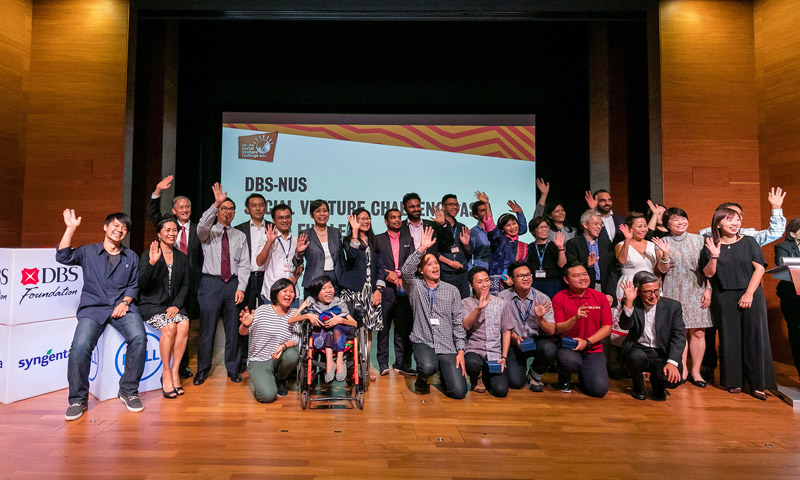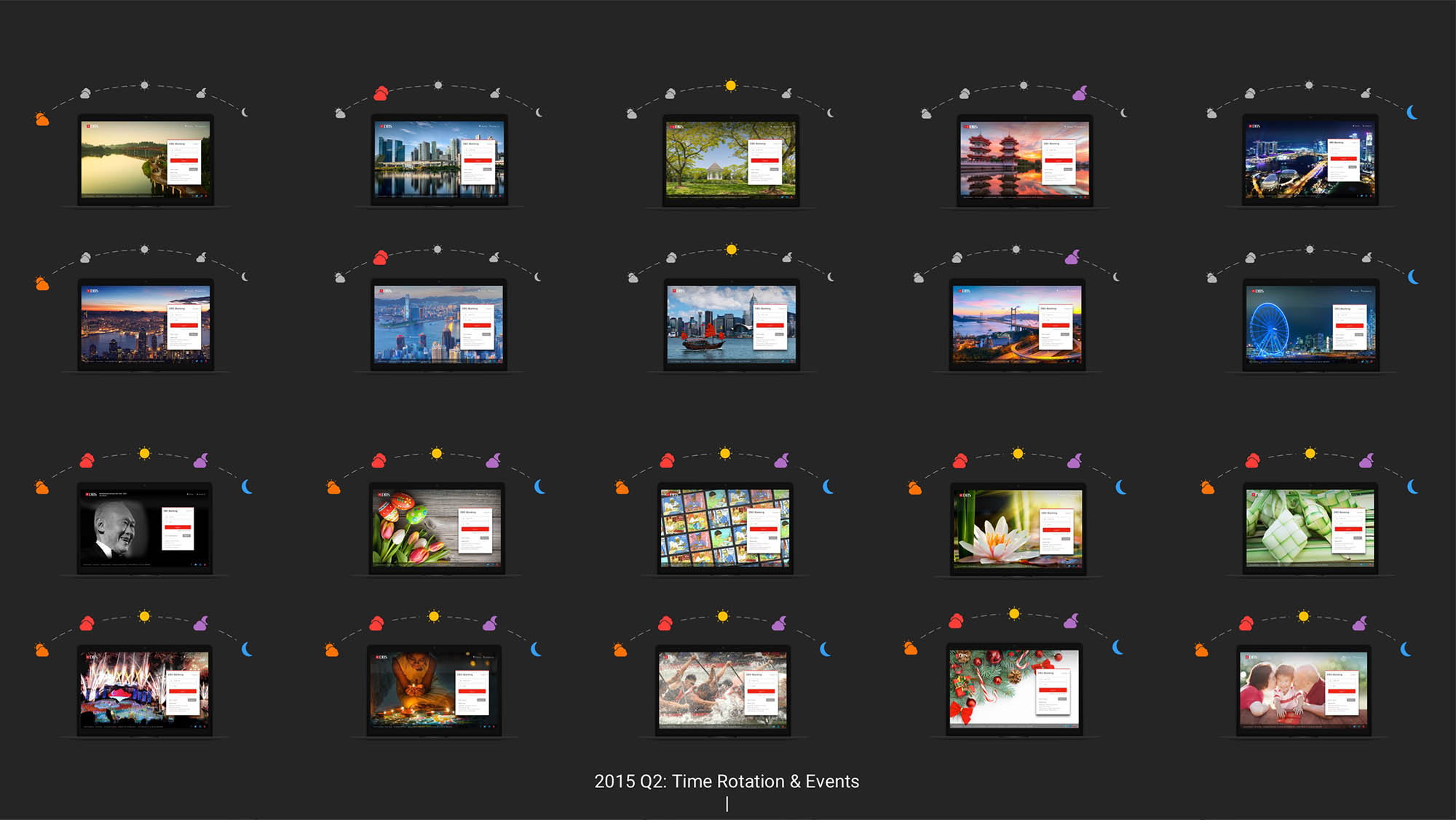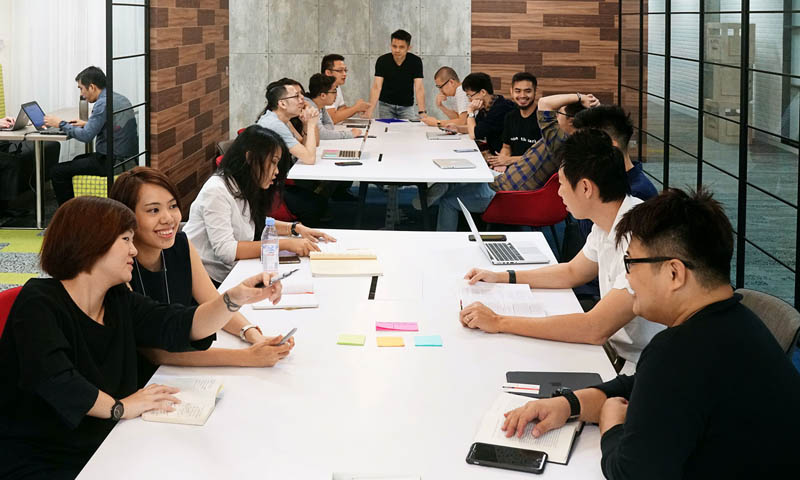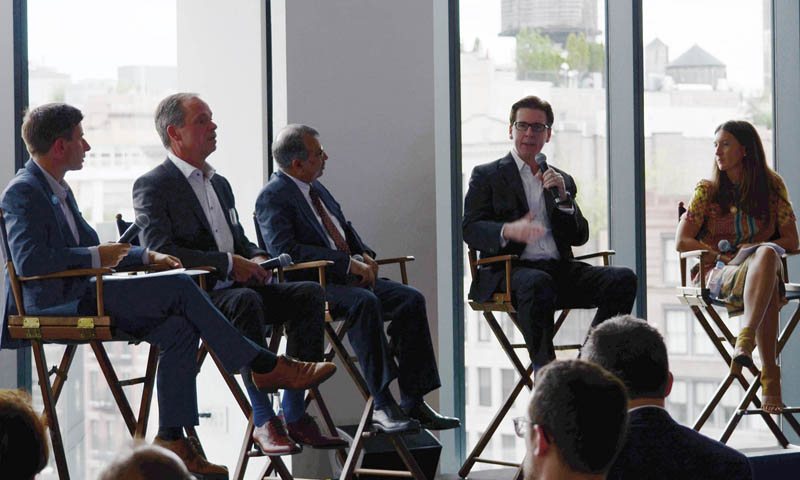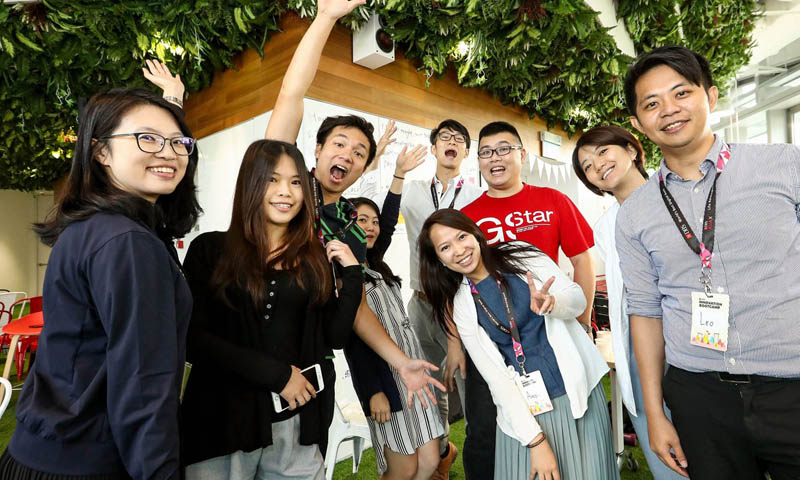To succeed in good UX design, everything should start and end with the customer
How can we make our customers’ lives better? This is one of our key goals at DBS and a question the DBS User Experience and Design team thinks about daily. We design the bank’s digital products so they not only perform efficiently but relate to customers on an emotional level.
Our philosophy is simple: design the right things and design things right. Good UX design is useful, intuitive and aesthetically pleasing.
If you build a beautiful pathway but people bypass it by cutting across the grass because that’s more convenient – can the pathway be considered to have good UX design?
At DBS, we combine classical design, design thinking and computational design for our products. We leverage on the latest technology to build our products, and also ensure our creations encompass the classical principles of balance, harmony and symmetry.
We place the customer journey at the core of product design. In practice, this means understanding how our product fits into our users’ lives, how it helps them achieve their goals and steps they will take to use our product.
Since we were formed in April 2014, the UX & Design team has grown from a two-man unit (including myself) to more than 30 people from various countries, including Singapore, India, China, UK, Thailand, Indonesia, Taiwan, Japan and Malaysia.
Our work spans six markets for DBS Consumer Banking – Singapore, China, Hong Kong, Indonesia, India and Taiwan. Within consumer banking, we design solutions across mobile, desktop, chat banking, and artificial intelligence. At any one time a designer could be working on 20 to 30 projects!
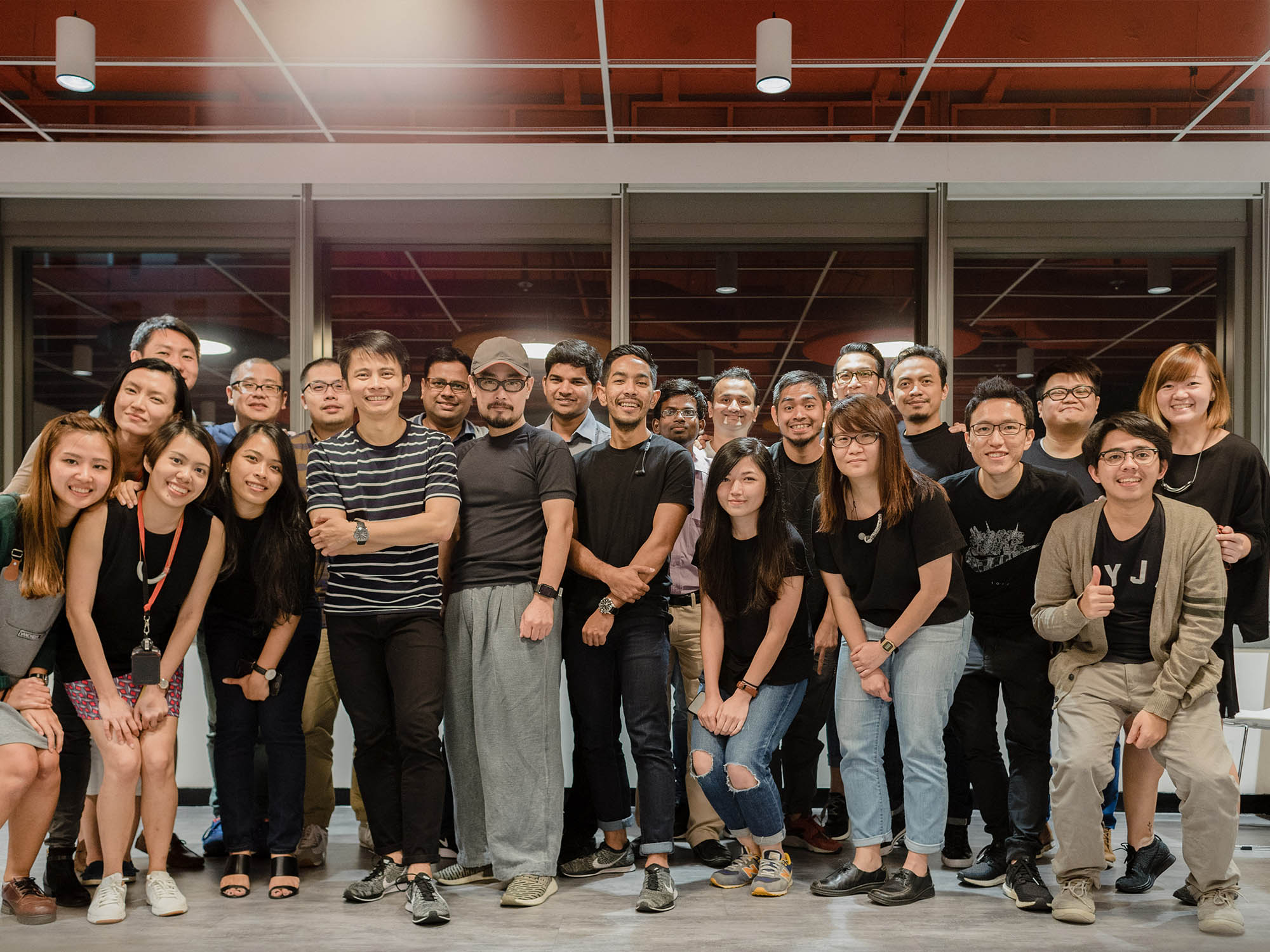
After hearing from our users and making revisions, we launch a pilot. Every new feature is born from some 15 to 30 iterations!
What does this mean for our designers? They must be humble and open to feedback. The work is never about one’s personal preferences.
Beyond a passion for experimentation and an innate sense of curiosity, a designer on our team must be driven to improve things.
He or she must have an eye for detail and an almost obsessive meticulousness. We strongly believe the product experience is a sum of all its parts.
Read more - The invisible design challenges of banking
Going the extra mile
In thinking of the customer journey, we’ve tried to anticipate our customers’ next course of action when using our service or product and make it easy for them to do so.
On our mobile banking application, for instance, customers who have completed one action will be offered suggestions on next steps, such as sharing the transaction confirmation with another party. This was conceived after we noticed users taking screenshots of their transfers.
Another example: when customers pay their credit card bill on the mobile banking app, they may not remember the billed amount.
So rather than having customers type in an amount, we created a menu offering users the option to either pay the outstanding bill, minimum or any amount. By doing so, we’ve shortened their journey to just a few taps.
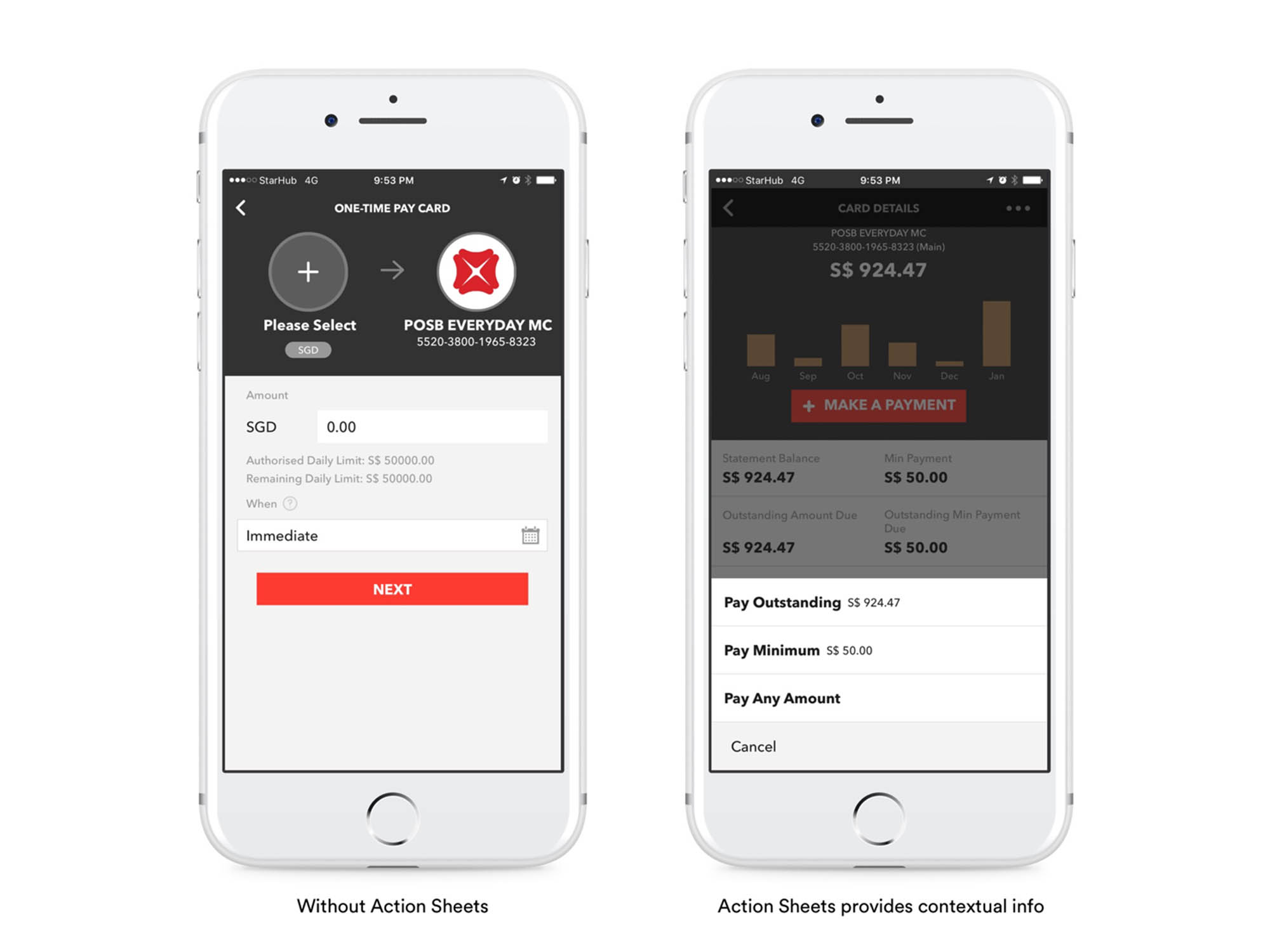
You would think we can breathe a sigh of relief after a product launches, but no, the work doesn’t stop.
We updated our feedback system to encourage more responses. Our previous form consisted of a lengthy questionnaire and, in all honesty, looked like an examination paper!
In May 2016, we changed it to a simple five-star rating system. Response has been amazing – the feedback we received jumped from around 2,000 comments a month to more than 80,000 comments a month!
This tells us one thing – people want to give feedback; we just need to find an attractive way for them to do so. In general, we try to address feedback within six months.
Read more - A day in the life of a designer in the DBS UX & Design team
Making things delightful
At the basic level, design improves functionality. But beyond that, we want to evoke emotions. We want to offer design that delights.
Traditionally, the iBanking log in screen is very utilitarian, filled with marketing messages, security announcements and award details. However, we found most people spend less than five seconds on that page. They just want to log in to their account.
Still, the page receives 6.9 million visits a month. It should be iconic.
My team suggested removing the “noise” from the page and filling it with eye-catching visuals. To provide relevance, the images coincide with the time of day. We also change the screens for special occasions such as National Day, Deepavali, Hari Raya or Chinese New Year.
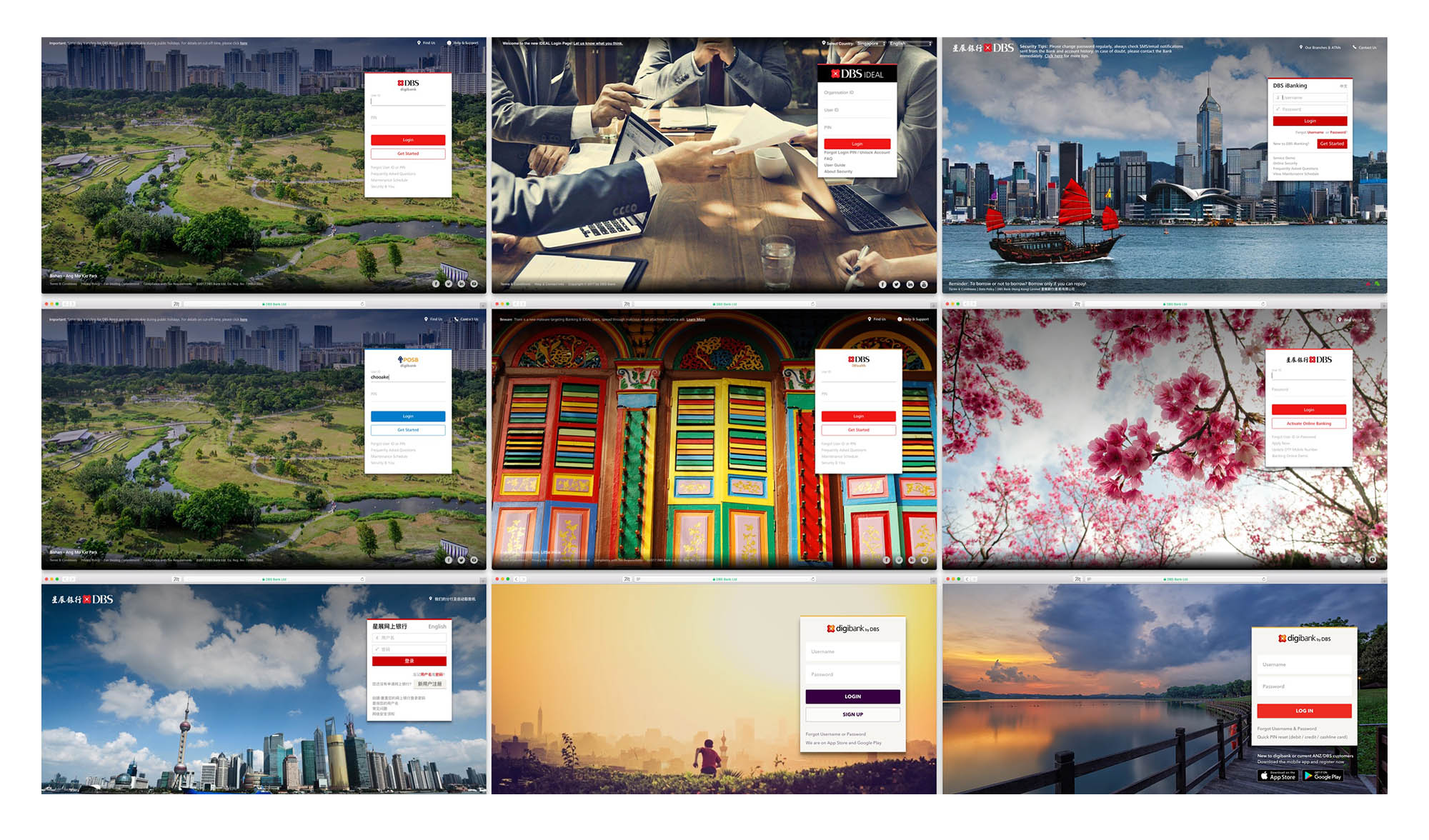

 Hong Kong
Hong Kong India
India Indonesia
Indonesia China
China Taiwan
Taiwan



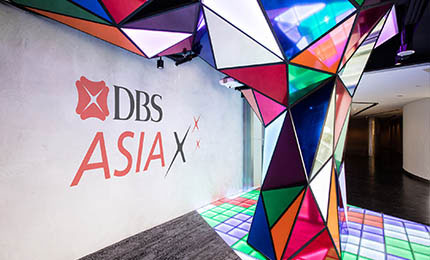





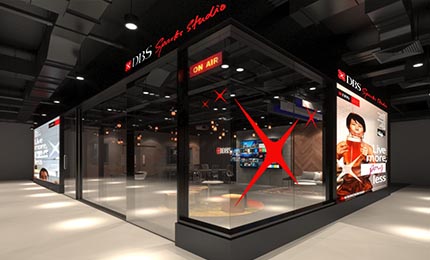





 10 Nov 2017 by
10 Nov 2017 by 
